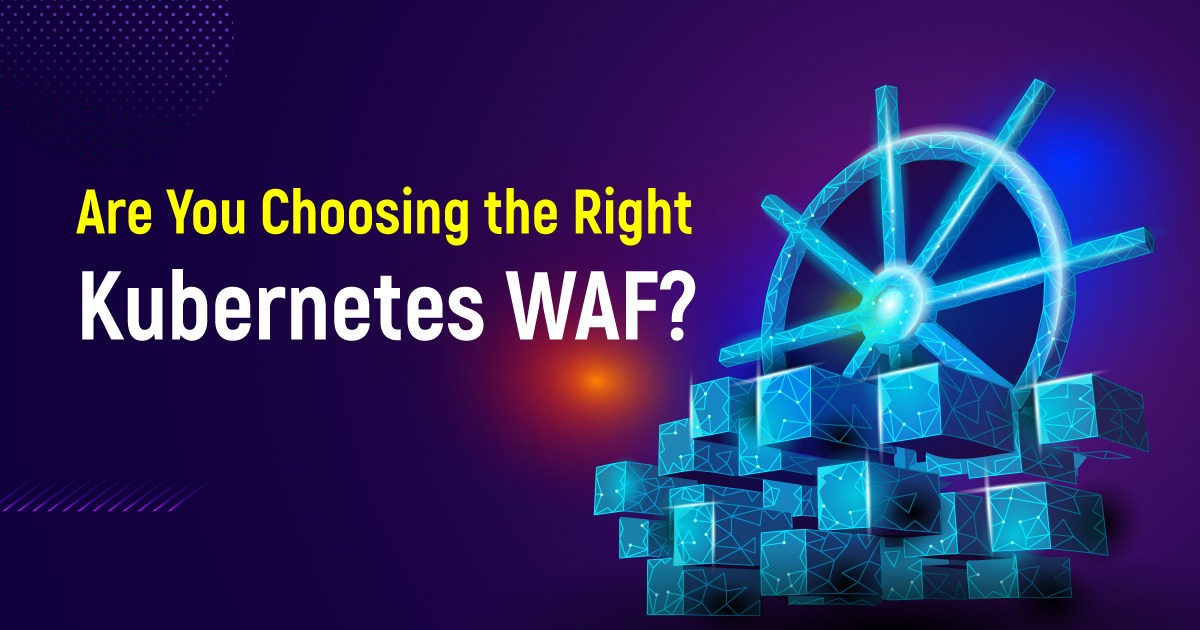Understanding Kubernetes WAF
At its essence, the Kubernetes Web Application Firewall (WAF) is a security mechanism designed to block, monitor, and modify HTTP traffic to and from applications deployed in Kubernetes clusters through incoming and responding requests in WAFs (SQL injection, cross-site scripting (XSS) by investigation) and can detect and mitigate various web-related threats, including remote file inclusion (RFI) Using a combination of request management, data validation, anomaly detection, and risk scoring techniques, Kubernetes WAFs serve as the first line of defense against cyber attacks targeting application-level vulnerabilities.
Why Kubernetes WAF is Essential for Kubernetes Security
In today’s highly interconnected digital environment, where cyber threats are ubiquitous, the importance of WAF in securing Kubernetes cannot be overstated. Here’s why:
Preventing Application Layer Attacks:
Kubernetes WAFs act as a shield, preventing unauthorized access to sensitive data and blocking malicious requests that exploit vulnerabilities in web applications.
Mitigating DDoS Attacks:
Distributed denial of service (DDoS) attacks pose a serious threat to web applications by overwhelming traffic. WAFs in Kubernetes clusters can effectively mitigate these attacks, ensuring uninterrupted operations.
Promoting API Security:
Kubernetes is a popular platform for managing APIs, so WAFs play an important role in detecting and preventing threats to APIs, including unauthorized access and data leaks.
Protecting Against Malicious Bots:
Automated bots pose a serious threat to web applications by inserting credentials and deleting content. Kubernetes WAFs can distinguish between human and bot traffic, protecting applications from bot-controlled threats.
Types of Kubernetes WAF Tools
Ingress Controller-Integrated WAFs
While these WAFs integrate seamlessly with popular Kubernetes access controllers like NGINX and HAProxy, providing improved security at the cluster’s access point and management ease, they may have limitations when it comes to advanced security features and customization of options.
Standalone WAF Solutions
Stand-alone WAF solutions are standalone tools or services used in the Kubernetes environment. They also offer configuration flexibility and robust security features such as machine learning-based threat detection and bot management. While they may require additional effort to integrate, they offer comprehensive protection tailored to specific security needs.
Cloud-Native WAF Solutions
Cloud providers offer managed WAF solutions specifically designed for the Kubernetes environment, which simplify deployment and deployment tasks. These WAFs seamlessly integrate with cloud provider services and offer scalability and built-in features such as monitoring and security analysis.
Container-Native WAF Solutions
Container-native WAF solutions are designed for containerized environments, focusing on connecting between containers in Kubernetes clusters. Features such as runtime security, vulnerability scanning, and compliance monitoring are provided to address the unique challenges of containerized environments.
Choosing the Right WAF Solution for Kubernetes
Choosing the most suitable WAF solution for Kubernetes requires careful consideration of several factors:
Integration Simplicity:
Choose a WAF solution that integrates easily with your existing Kubernetes infrastructure and is compatible with the access controllers used.
Scalability and Performance:
Ensure that the WAF solution can scale effortlessly with the growth of your applications without compromising performance, preferably designed explicitly for containerized environments.
Policies and Rule Sets:
Choose WAF to provide customized policy and rule sets to protect against endemic web application threats, including pre-configured templates based on industry standards.
Anomaly Detection Capabilities:
Leverage WAF solutions with anomaly detection capabilities powered by machine learning, allowing real-time traffic monitoring to identify potential risks.
Visibility and Reporting:
Choose a WAF solution that provides comprehensive insights into traffic, threats blocked, and security incidents and empowers your security team to monitor and build the effectiveness of WAF implementation-informed decision-making.
Kubernetes WAF with Prophaze

Prophaze seamlessly embeds the WAF into your Kubernetes ingress controller, serving as a gateway for incoming traffic toward your API services. By leveraging cloud load-balancing software, Prophaze adds a layer of protection, effectively filtering malicious traffic before it reaches your applications.
Prophaze can be containerized using Docker and orchestrated with Kubernetes, enabling scalable and flexible deployment across your cluster. Whether you’re running a single-node cluster or a large-scale production environment, Prophaze adapts to your needs, providing consistent and reliable protection against cyber threats.
Securing Kubernetes WAF Ecosystem with Prophaze
In the dynamic and ever-evolving landscape of Kubernetes security, Web Application Firewalls (WAFs) emerge as indispensable components in fortifying the defenses of cloud-native applications. By understanding the significance of Kubernetes WAFs, exploring the diverse types of WAF tools available, and adhering to best practices in selection and deployment, organizations can enhance their security posture and mitigate the risks posed by modern cyber threats. As we navigate the complexities of Kubernetes security, mastering the art of WAF implementation becomes paramount to safeguarding the integrity and resilience of applications in today’s digital age.












